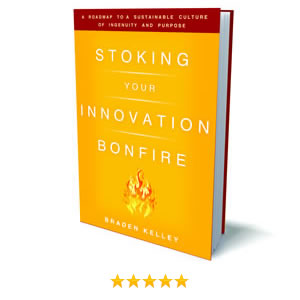Case Study Analysis

GUEST POST from Chateau G Pato
In today’s competitive business environment, innovation is crucial for not only surviving but thriving. However, many organizations face the challenge of building an innovation culture on a limited budget. While it may seem daunting, there are numerous examples of companies that have successfully fostered innovation without breaking the bank. By examining specific case studies, we can gain valuable insights into cost-effective strategies, grassroots initiatives, and creative solutions that drive innovation.
Case Study 1: Mailchimp
Mailchimp, the email marketing platform, is a prime example of a company that has successfully built an innovation culture on a limited budget. With a focus on employee empowerment and creativity, Mailchimp has fostered a culture of experimentation and collaboration. One key strategy they have employed is allowing employees to dedicate a portion of their time to personal passion projects, known as “Mailchimp Labs.” This not only encourages creativity but also helps in identifying new ideas and opportunities.
Additionally, Mailchimp has also leveraged external partnerships and collaborations to fuel innovation. By partnering with universities, startups, and industry experts, Mailchimp is able to tap into a diverse range of perspectives and insights without a hefty financial investment. This approach has helped Mailchimp stay ahead of the curve and continually innovate in a cost-effective way.
Case Study 2: ClickUp
ClickUp, a project management software company, is another great example of building an innovation culture on a limited budget. ClickUp has adopted a bottom-up approach to innovation, empowering employees at all levels to contribute ideas and suggestions. This not only fosters a sense of ownership and commitment but also ensures that innovation is not limited to a select few.
Furthermore, ClickUp has embraced a culture of continuous learning and improvement. By encouraging employees to attend conferences, workshops, and training sessions, ClickUp ensures that its team is constantly exposed to new ideas and trends in the industry. This investment in employee development has paid off, as ClickUp continues to launch new features and products that meet the evolving needs of its customers.
Conclusion
Building an innovation culture on a limited budget is not only possible but also advantageous for organizations looking to stay competitive in today’s market. By learning from case studies like Mailchimp and ClickUp, companies can gain valuable insights into cost-effective strategies, grassroots initiatives, and creative solutions that drive innovation. With the right mindset and approach, organizations of all sizes can foster a culture of innovation that propels them towards success.
SPECIAL BONUS: Futurology is not fortune telling. Futurists use a scientific approach to create their deliverables, but a methodology and tools like those in FutureHacking™ can empower anyone to engage in futurology themselves.
Image credit: Pexels
![]() Sign up here to get Human-Centered Change & Innovation Weekly delivered to your inbox every week.
Sign up here to get Human-Centered Change & Innovation Weekly delivered to your inbox every week.

 While most people are focused on what the new Apple iPhone 6 hardware might look like and what new gizmos it might have, the real killer app for Apple’s latest refresh of their flagship mobile device will be an App and a little tiny NFC chipset.
While most people are focused on what the new Apple iPhone 6 hardware might look like and what new gizmos it might have, the real killer app for Apple’s latest refresh of their flagship mobile device will be an App and a little tiny NFC chipset.
 The operational model for charities in this country is an ideal candidate for disruptive innovation. It strikes me as odd that charities, the organizations that really have the least to spend on marketing, spend such inordinate amounts of money and time on marketing to raise money. Does spending lots of money on fundraising actually work?
The operational model for charities in this country is an ideal candidate for disruptive innovation. It strikes me as odd that charities, the organizations that really have the least to spend on marketing, spend such inordinate amounts of money and time on marketing to raise money. Does spending lots of money on fundraising actually work?
 There are some strange rumors circulating out there that I’ve written a book. Before these rumors spin out of control, I thought I should address you, the loyal and valued readers of Blogging Innovation, and set the record straight.
There are some strange rumors circulating out there that I’ve written a book. Before these rumors spin out of control, I thought I should address you, the loyal and valued readers of Blogging Innovation, and set the record straight.